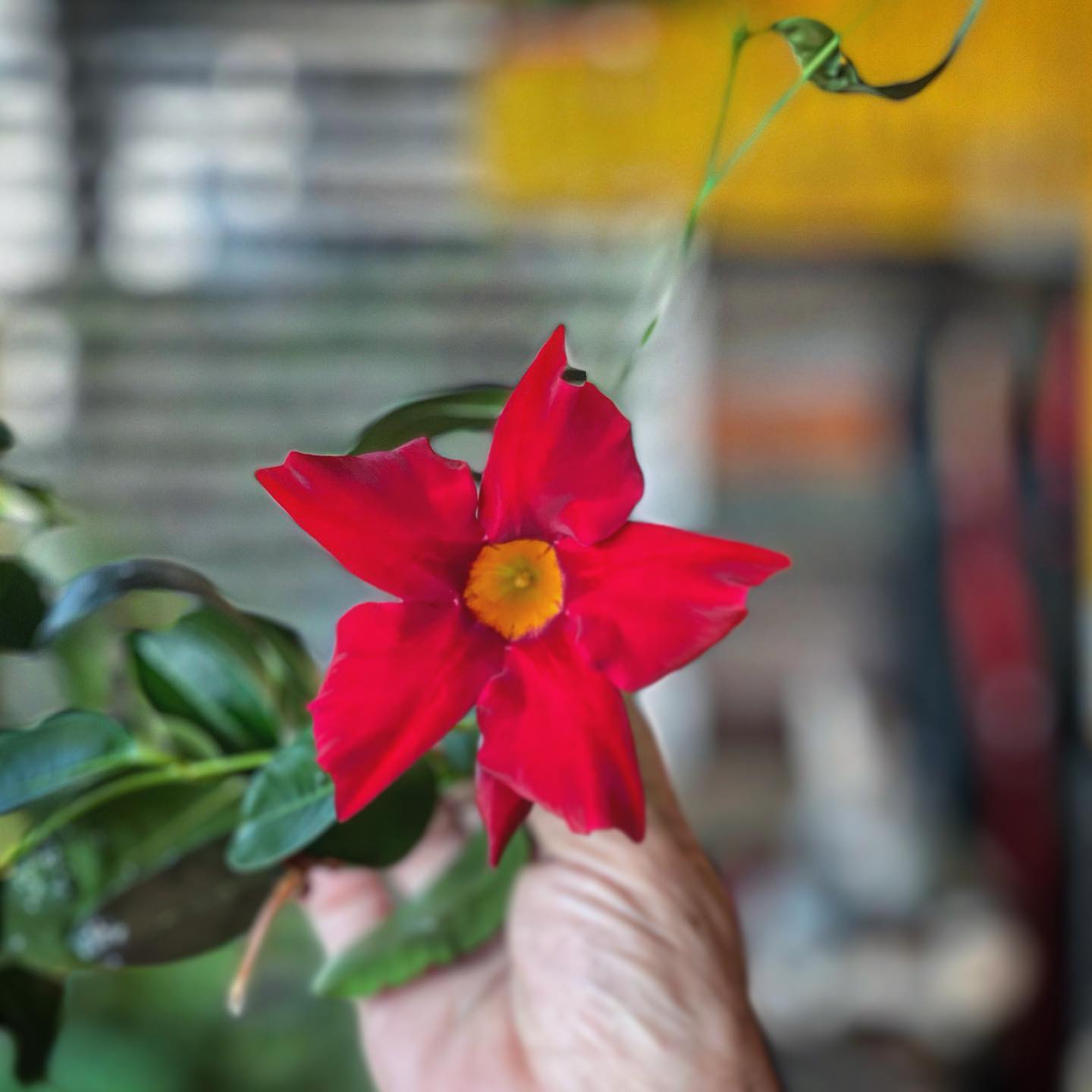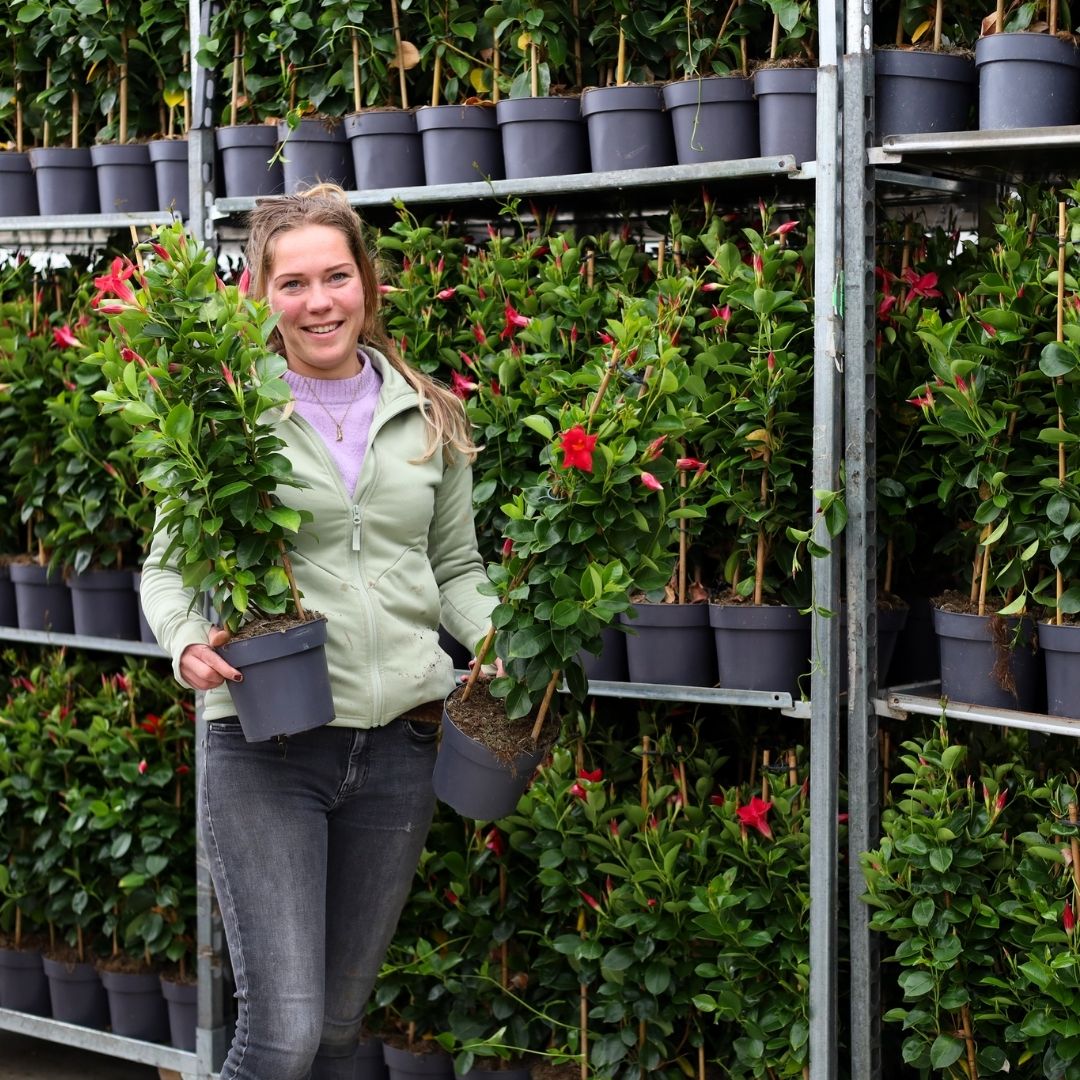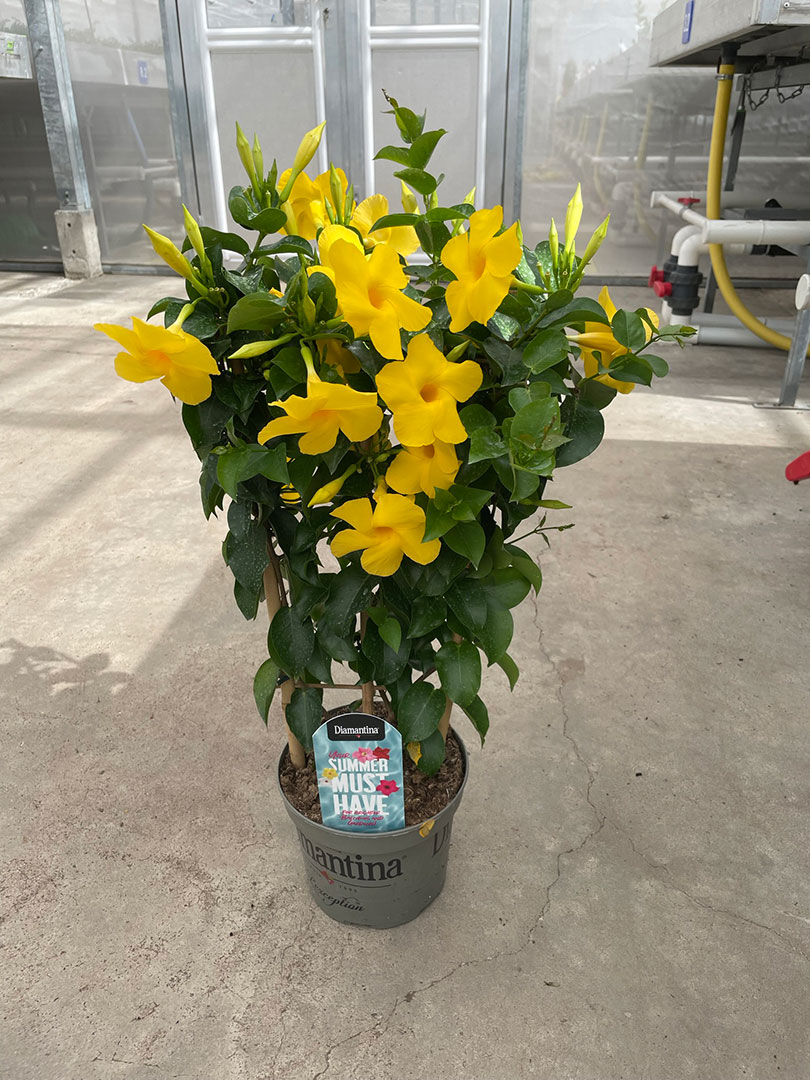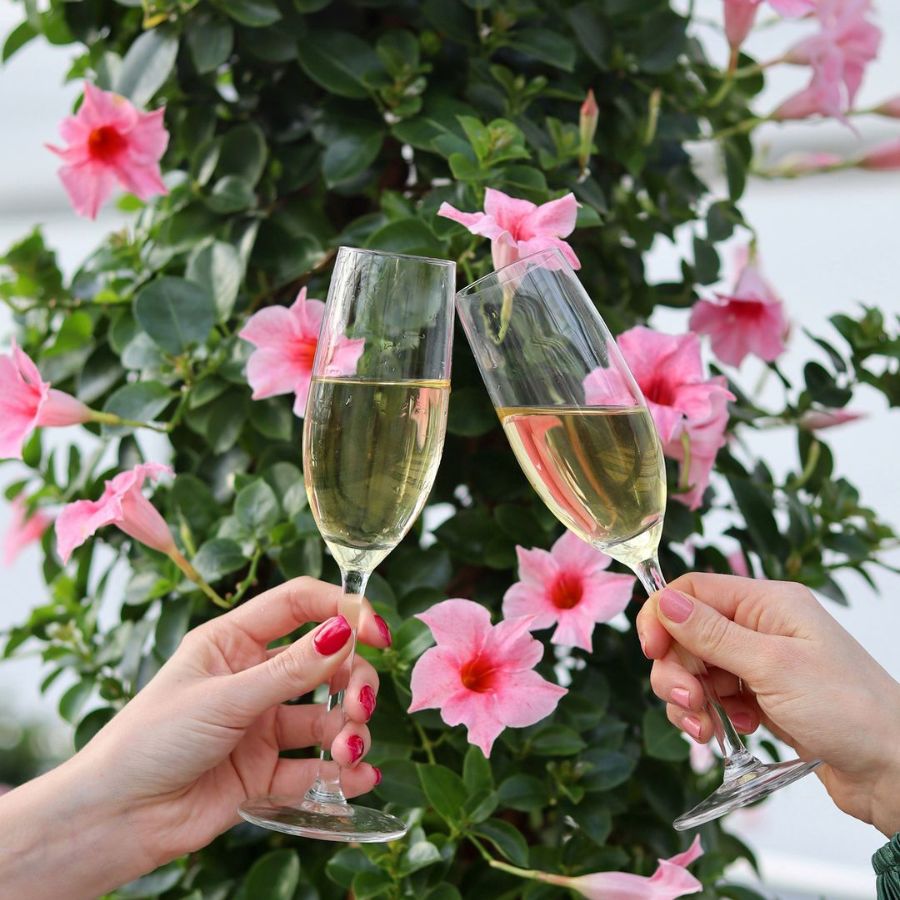
Step into the world of the captivating Mandevilla plant, a gorgeous tropical vine that can transform any garden or patio into a breathtaking oasis. Known for its elegant trumpet-shaped flowers, the Mandevilla plant is a favorite among flower enthusiasts and designers alike. Its vibrant blooms and charming allure make it the perfect addition to any floral arrangement or garden.
Some common names are:
- Mandevilla Sanderi
- Brazilian Jasmine
- Dipladenia
- Rocktrumpet
But, what makes this plant truly special? Keep reading to unlock the secrets behind the Mandevilla's captivating charm and learn how to make it thrive in your own space.
Mandevilla Magic: Exploring the Plant's Unique Features
The Mandevilla's striking appearance is undoubtedly one of its most alluring qualities. This stunning plant boasts eye-catching trumpet-shaped flowers that come in a variety of colors, including pink, red, white, and even yellow. The blooms are not only visually appealing, but they also release a delicate fragrance that adds to their charm. The glossy green leaves provide a beautiful backdrop for the flowers, creating a harmonious balance of color and texture.

Native to Central and South America, the Mandevilla plant belongs to the Apocynaceae family. It is a climbing vine that can reach impressive heights, making it an excellent choice for trellises, pergolas, or fences. With the right care, Mandevilla can create a stunning vertical garden feature that will leave guests in awe.
Aside from its aesthetic appeal, the Mandevilla plant is also known for its resilience. It can adapt to various environments and is relatively low-maintenance, making it a favorite for both novice and experienced gardeners alike. Whether you're looking to add a pop of color to your outdoor space or create a showstopping focal point, the Mandevilla is sure to impress. Due to the beginning of the availability in colder climates by April, this plant is a much-loved gift for Mother's Day.
Is Mandevilla a Perennial? Understanding the Plant's Growth Habits
One common question that arises when discussing the Mandevilla plant is whether it's a perennial or not. The answer depends on the specific growing conditions and climate of your region. In tropical and subtropical areas, the Mandevilla can indeed be treated as a perennial, as it can survive and flourish year-round outdoors. However, in cooler climates, the plant is often grown as an annual or brought indoors during the winter months.
If you live in an area with freezing temperatures, it's essential to take extra precautions to protect your Mandevilla plant. One option is to move it indoors before the first frost arrives. Place the plant in a well-lit area, and reduce watering and feeding during the winter months. Once the temperatures begin to warm up in the spring, you can gradually reintroduce your Mandevilla to the outdoors.
Another option for those in colder climates is to treat the Mandevilla as an annual, allowing it to complete its life cycle outdoors and then replacing it with a new plant the following year. This approach can be more convenient for some gardeners, as it avoids the need to overwinter the plant indoors. Regardless of the method you choose, the enchanting beauty of the Mandevilla plant makes it well worth the effort.

The Main Differences Between Dipladenia and Mandevilla
Dipladenia and Mandevilla are often confused due to their similar appearance and characteristics. However, they are distinct plants within the same botanical family, Apocynaceae. The differences are:
- Growth habit: Dipladenia has a more bushy and compact growth habit, while Mandevilla is a vigorous climbing vine that requires support, such as a trellis or pergola.
- Leaf shape: Dipladenia leaves are typically smaller, thicker, and more leathery compared to the larger, glossy leaves of Mandevilla.
- Flower size: Dipladenia flowers are generally smaller than Mandevilla flowers, but they still share the same trumpet shape.
- Cold tolerance: Dipladenia is generally more cold-tolerant than Mandevilla, which means it can withstand lower temperatures.

Despite these differences, Dipladenia and Mandevilla have similar care requirements. Both plants need bright light, well-draining soil, and consistent moisture. They also benefit from regular feeding and pruning to encourage healthy growth and abundant blooms.
Mandeville Marvel: Caring for Your Mandevilla Plant
Proper care is essential for ensuring the health and vibrancy of your Mandevilla plant. Although these plants are generally low-maintenance, they do require specific conditions to truly thrive. Mandevilla plants love sunlight, so it's important to provide them with a location that receives at least six hours of direct sun per day. However, if you live in a particularly hot climate, some afternoon shade may be beneficial to prevent the plant from becoming scorched.
When it comes to watering, the Mandevilla prefers consistently moist soil but is sensitive to over-watering. Make sure to allow the top inch of soil to dry out between waterings, as soggy soil can lead to root rot. Additionally, Mandevilla plants appreciate regular feeding during the growing season. Use a balanced, water-soluble fertilizer every two to four weeks to encourage healthy growth and abundant flowering.
Pruning is another essential aspect of Mandevilla care. Regular pruning helps maintain the plant's shape and encourages more blooms. It's best to prune in late winter or early spring, just before the new growth begins. Remove any dead or damaged stems, and cut back any overly long or unruly branches to keep your Mandevilla looking tidy and full.

Mandevilla Care in Short
In this section, you find various aspects of Mandevilla care and some guidance on how to meet its unique needs.
Sunlight
Mandevilla plants thrive in bright sunlight and require at least six hours of direct sun each day. If your plant is not receiving enough light, it may become leggy and produce fewer blooms. In particularly hot climates, you may need to provide some afternoon shade to protect the plant from extreme heat and sunburn.
Water
While Mandevilla plants prefer consistent moisture, they are sensitive to over-watering. Allow the top inch of soil to dry out between waterings, and make sure your plant has proper drainage to prevent waterlogged soil. Over-watering can lead to root rot and other issues that can harm your plant's health.
Humidity
As tropical plants, Mandevillas appreciate higher humidity levels. If you live in a dry climate or have your plant indoors, you can increase humidity by misting the leaves regularly or placing the plant on a tray filled with water and pebbles. The evaporating water will create a humid microclimate around the plant.
Temperature
Mandevilla plants prefer warm temperatures, ideally between 60-80°F (15-27°C). They are not frost-tolerant and should be protected from temperatures below 50°F (10°C). If you live in a colder climate, consider bringing your plant indoors during the winter months or treating it as an annual.
Soil
When it comes to soil, Mandevilla plants require a well-draining, slightly acidic to neutral mix (pH 6.0-7.0). A blend of peat moss, perlite, and potting soil can create the ideal environment for your plant's roots. Ensure proper drainage to prevent waterlogged soil and potential root rot.
Propagation
Propagating Mandevilla plants is relatively straightforward. You can use stem cuttings taken during the growing season to create new plants. Simply take a 4-6 inch (6-10 cm) cutting, remove the lower leaves, and dip the cut end in rooting hormone. Place the cutting in a pot with moistened potting mix, and keep it in a warm, bright location until roots develop.
Common Problems and Pests
While Mandevilla plants are generally resilient, they can be susceptible to common pests such as aphids, spider mites, and whiteflies. Inspect your plant regularly for signs of infestation, and treat any issues promptly with insecticidal soap or neem oil. To prevent fungal issues like powdery mildew, ensure proper air circulation around the plant and avoid wetting the foliage when watering.
Embrace the Beauty of the Mandevilla Plant in Your Garden
In conclusion, the Mandevilla plant is a true gem in the world of flowers and gardening. Its stunning trumpet-shaped blooms, rich colors, and delightful fragrance make it an irresistible addition to any outdoor space or floral arrangement. Moreover, its resilience and adaptability make it a rewarding plant to grow, whether you're a seasoned gardener or just starting out.
By understanding the specific needs of the Mandevilla plant and providing proper care, you can create a beautiful and thriving garden that will leave a lasting impression. So, go ahead and indulge in the enchanting world of the Mandevilla, and prepare to be captivated by its undeniable charm.

No comments:
Post a Comment
Note: Only a member of this blog may post a comment.